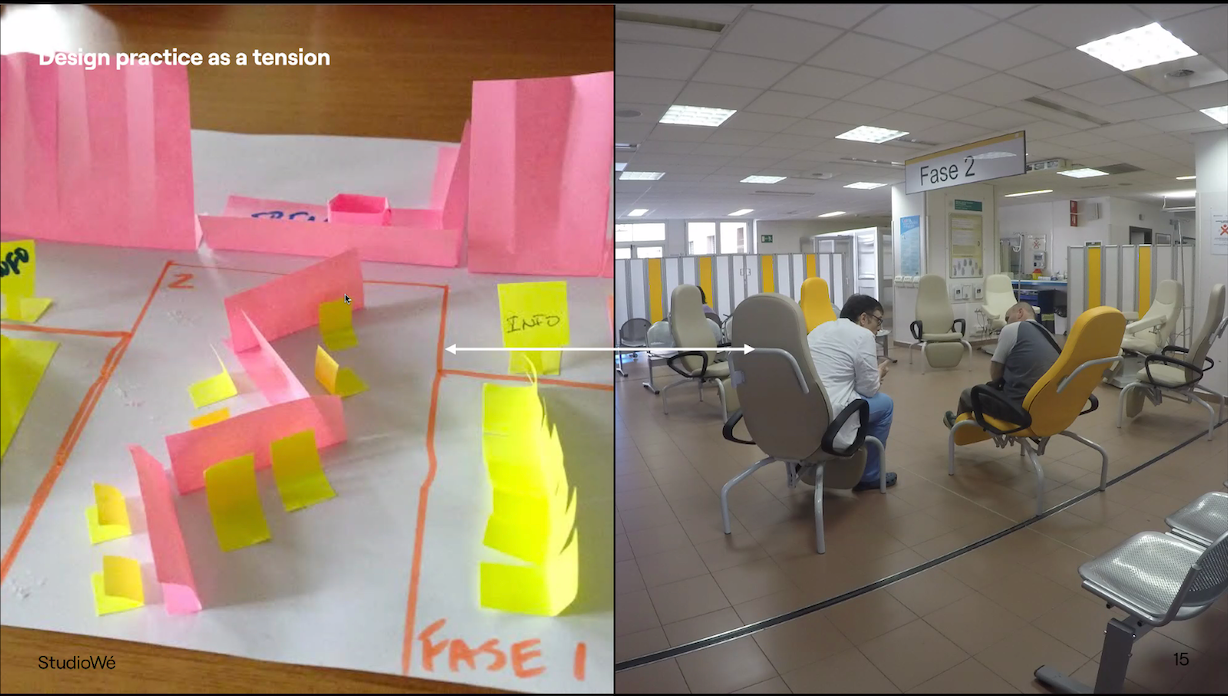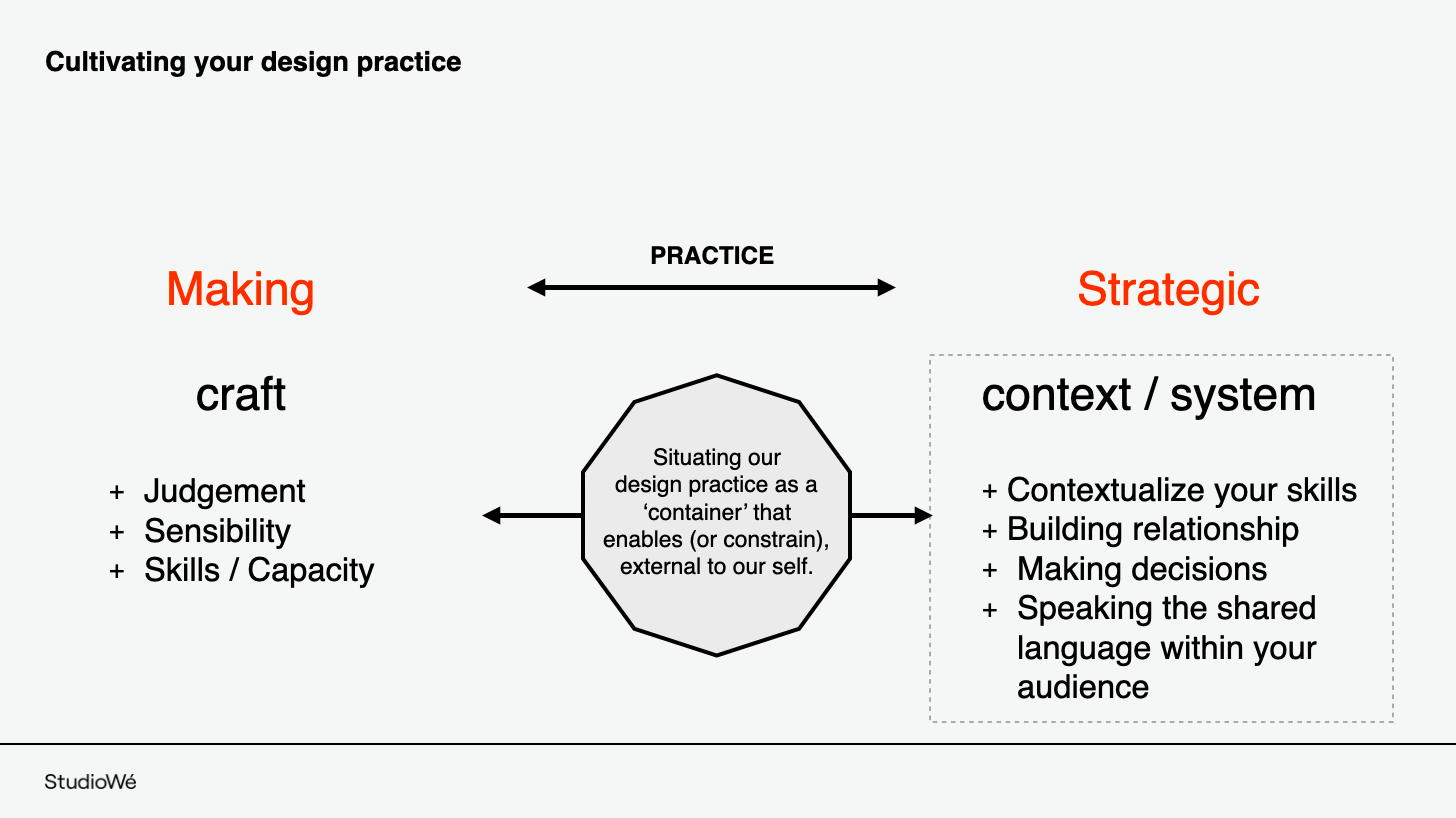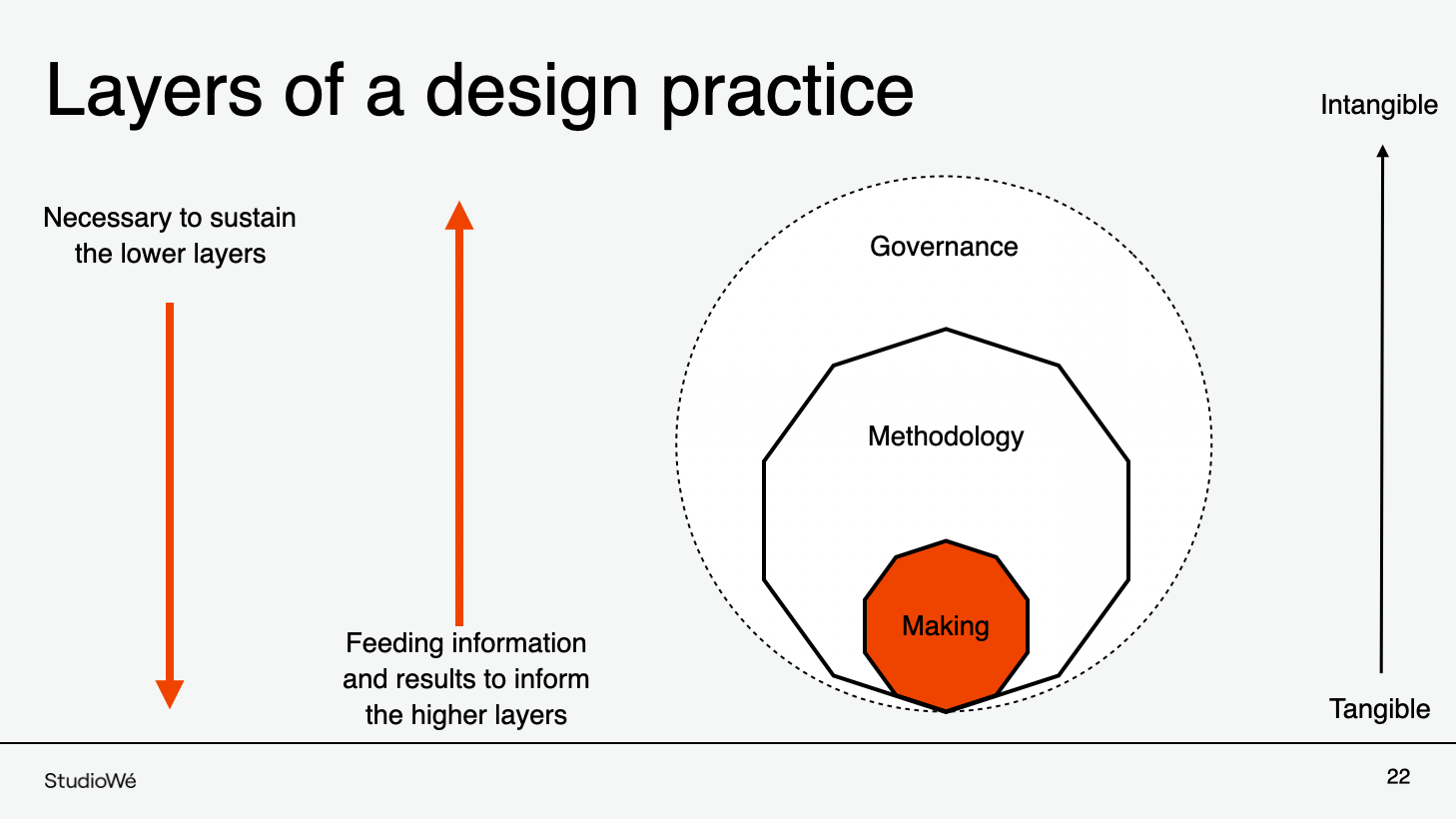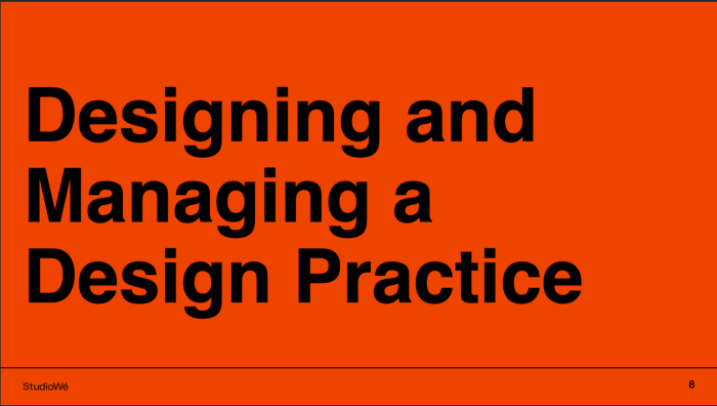The Service Design Network New York Chapter hosted Antonio Iadarola and Antonio Starnino, co-founders of Studio Wé, for an interactive and virtual event entitled: Design Governance, How to Run Design Practices. With the hosts’ guidance, participants exercised their strategy acumen to brainstorm how they could apply design governance to their roles, their organizations, and their fields. You can find the recording here.
Studio Wé is a workplace strategy and design studio that shapes the container in which innovative work happens. The studio supports organizations that are trying to implement service systems, appraises how we as a collective do work, and reimagines how we can do better work. Antonio Iadarola is a trained Industrial Designer from Naples, Italy, who has specialized in narrative environments, design innovation, social innovation, placemaking, and service design. Antonio Starnino is a trained service designer from Montreal, Canada who brings experience in human systems intervention, design for the public sector, and design for private industries.
Both Antonio and Antonio both credit their interdisciplinary design backgrounds for shaping their own design governance and design practice — a journey that will be illustrated throughout the presentation.

Envisioning Our Own Design Practice
Antonio and Antonio started their presentation on design governance by jumping right into an interactive session. Participants joined breakout rooms in groups of three to discuss the following prompt:
From within our current professional roles, how could we use our three roles to create an ad hoc design practice?
My own breakout room consisted of a User Researcher, a Senior UX Designer, and a Software and Content Strategist. We immediately envisioned a boutique design agency for ourselves, focused on research, strategy, and metrics. Back in the main conversation with our hosts, other groups shared their brainstorm creations: from creating value as a design or research oriented practice by helping to solve problems, to focusing on the strengths of each of the roles and what each role cares about.
This latter point, Antonio Iadrola explained, is an elemental part of creating a design practice. Synthesizing the team’s development of knowledge and expertise creates a design practice. Antonio Starnino elaborated to say that we are trying to describe our way of being. Trying to make sense, leverage a way of working together better, and find a way for different skills to collaborate.
Creating a design practice and then a design governance is an existential crisis of muddling through!
Why Have a Design Governance?
Antonio and Antonio then dove into their presentation, starting with their reasons for having a design governance.
- What they encountered in their projects is that, as a designer, you have to navigate ambiguity and discover, make sense of, and navigate the complexity of a design project.
- The governance, if structured as an agreement on how design works, can provide a compromise for the tension of navigating the ambiguity.
Antonio Starnino gave an illustrative example of the role a design governance played in a hospital re-design project. The hospital team had an idea of what they wanted, but Antonio employed his design practice and governance to balance the hospital’s preconceived ideas and the research and design that Antonio brought to the table. Antonio leveraged his codesign and service design expertise to give the hospital a different perspective and a wider conversation about the design’s possibilities, which overall led to a successful process and product.

An agreed upon governance places constraints around you as a designer, and it helps determine:
- How you learn
- How you work with other people
- How you brand yourself
- How we decide
- How we do results
Those constraints allow you to steer the ship and move forward.

Different Design Governance Models
Antonio and Antonio broke down the way a design governance can scale. There is the network model, in which a governance can apply across a broad organization system and all of its affiliated chapters, conferences, and members. And then there is the studio model, employed typically by a design agency. Nuances exist, however, such as in a case where a small team within a larger company may hold its own design governance separate from the organization.
An organization’s design governance may exist overtly. But there is the possibility that the governance exists covertly. And as depicted in the graphic below, the governance may be informed by both a top-down and bottom-up dynamic.

Design Governance as Consensus
Overall, the root of a design governance and design practice is building consensus: agreeing how a design works. The methods used to arrive at a governance and the scale employed are contextual and influenced by the type of organization and the people/roles within it.
Antonio and Antonio shared a definition of governance from Starhawk’s Empowering Collaborative Groups Presentation:
Where do people have autonomy? Where do you need group agreements? Consensus? Who makes which decisions about what?
Antonio and Antonio intermingled a Q&A with a second interactive activity: defining the “parts” of governance and listing how we further explore them on a collaborative MURAL board, shown below.

We invite you to take a listen to the recording, explore additional examples of design governance and design practice, and think about how you can apply the concepts to your own design profession.
Find this content interesting or useful? Follow the SDN New York Chapter on Medium to see additional event recaps, join their Meetup group to learn about upcoming events and/or follow them on Instagram, LinkedIn and Twitter.









Share your thoughts
0 RepliesPlease login to comment